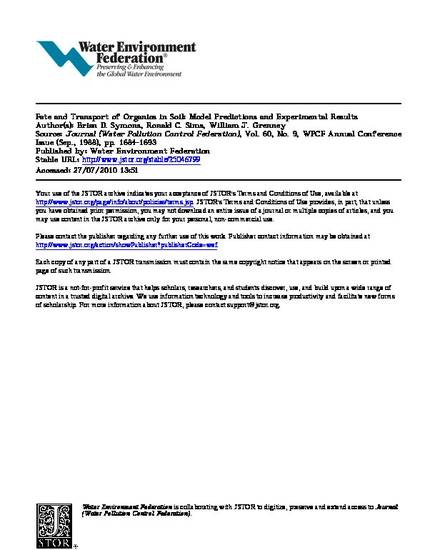
Laboratory batch reactors were used to generate quantitative information about the fate of polynuclear aromatic hydrocarbon (PNA) compounds in soil systems. First-order degradation rates and equilibrium partition coefficients determined in laboratory studies were used in the Vadose Zone Interactive Processes (VIP) mathematical model to predict the fate and behavior of the PNA compounds as a function of time and soil depth. Predicted model results were compared with independent laboratory soil column studies for model validation. The VIP model provided a good approximation of the degradation and transport of the seven PNA compounds evaluated after 6 months of incubation in soil. Sensitive parameters in the VIP model included degradation rates and initial soil concentrations.
Available at: http://works.bepress.com/ronald_sims/63/

Reprinted with permission from Water Environment Research Journal, Copyright ©1982-1988, Water Environment Federation, Alexandria, Virginia, www.wef.org These papers may be downloaded for personal uses only. Any other use requires prior permission of the Water Environment Federation.